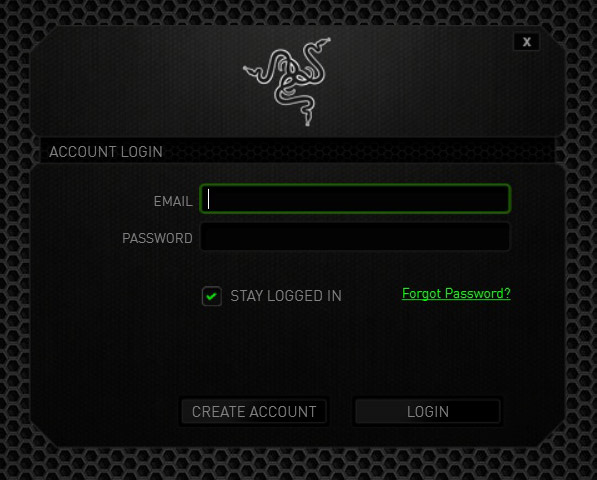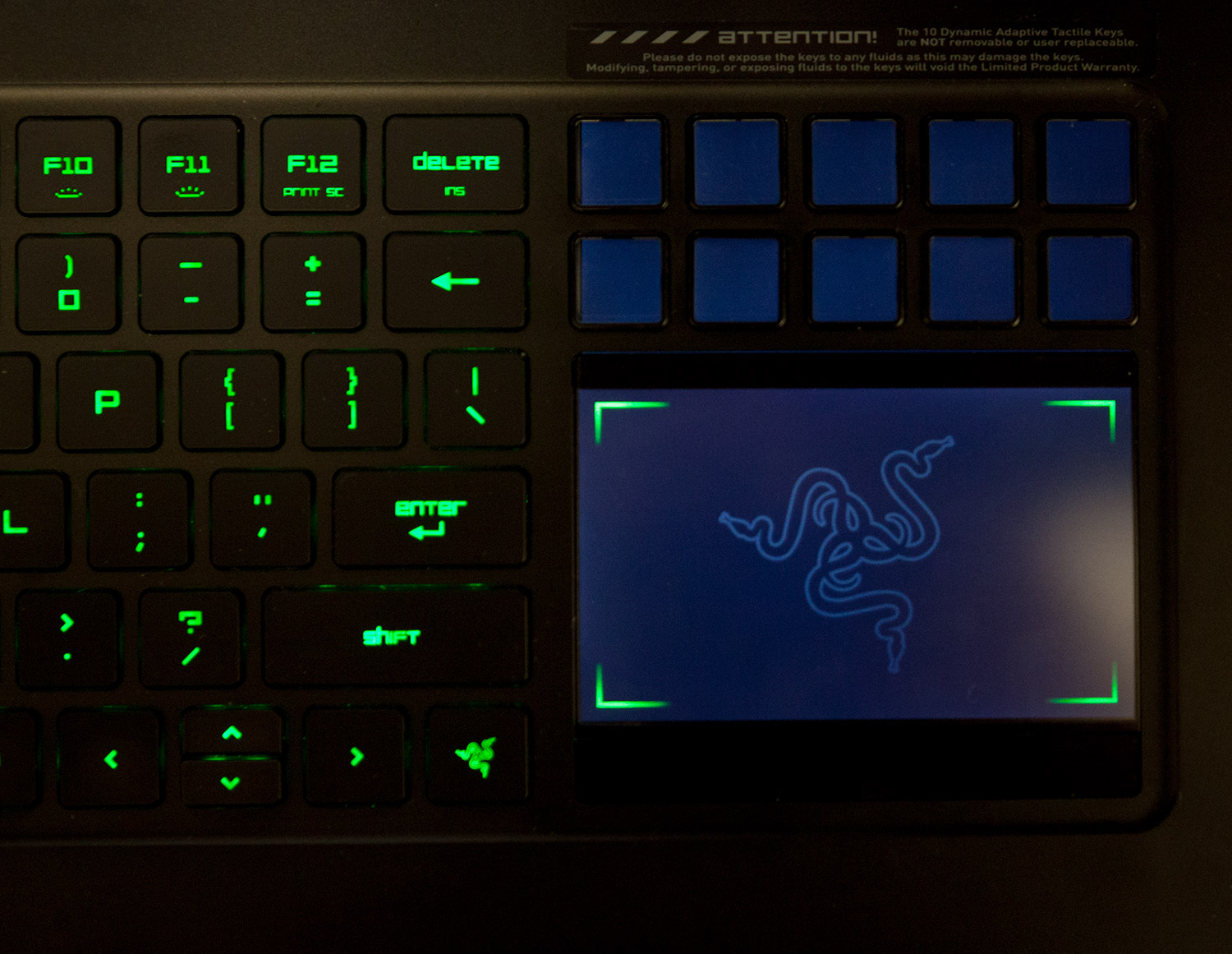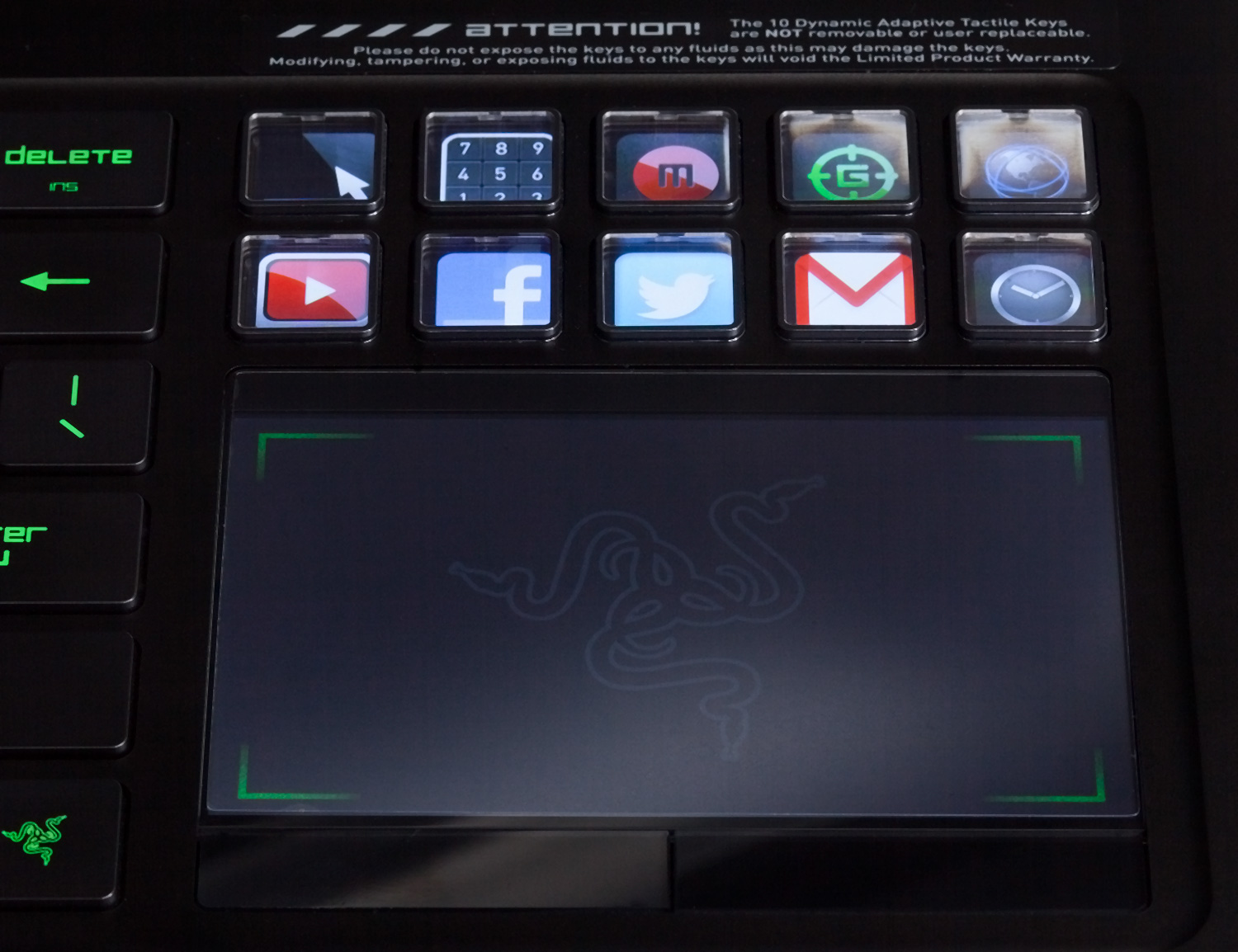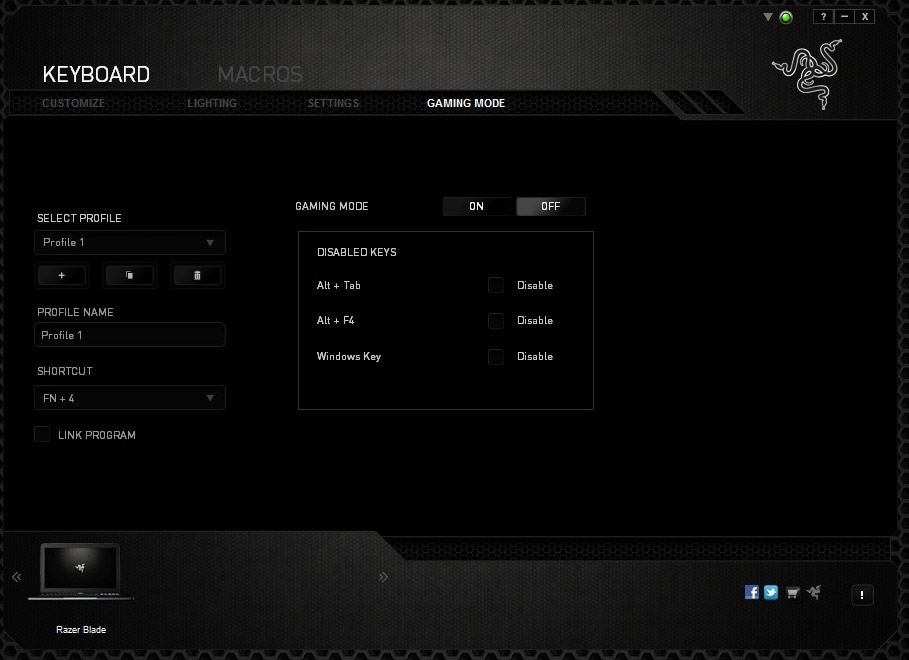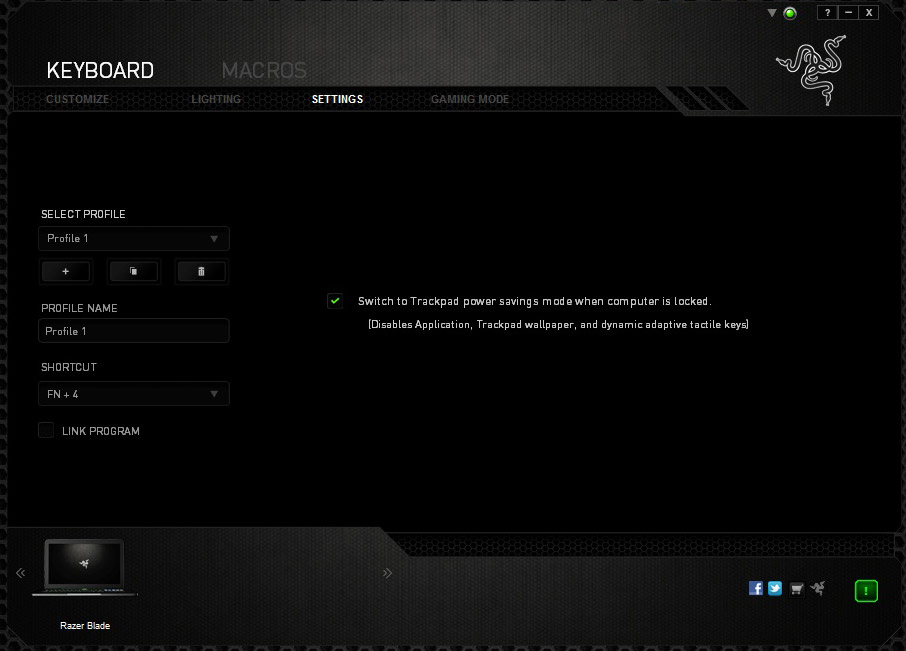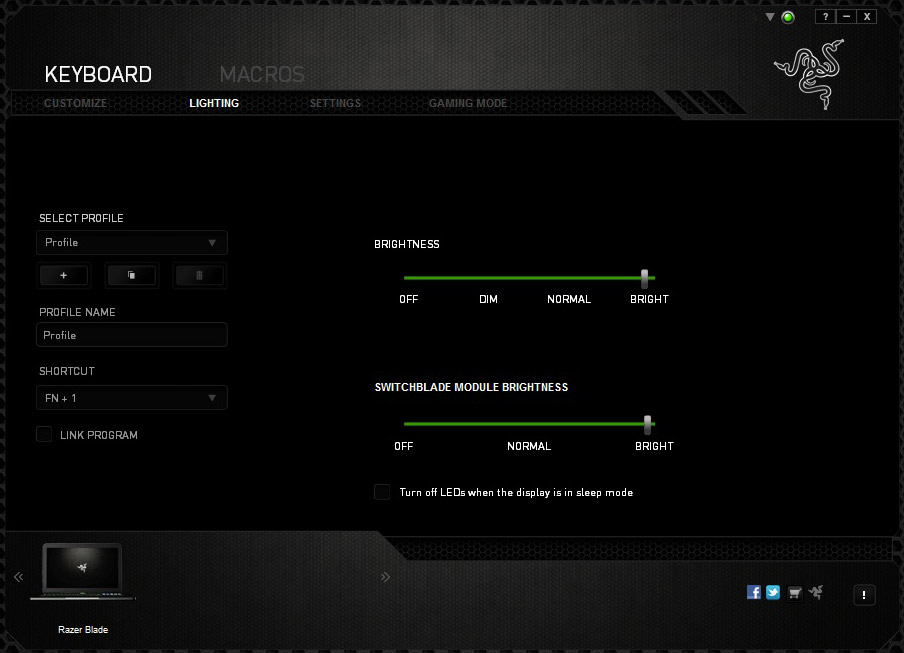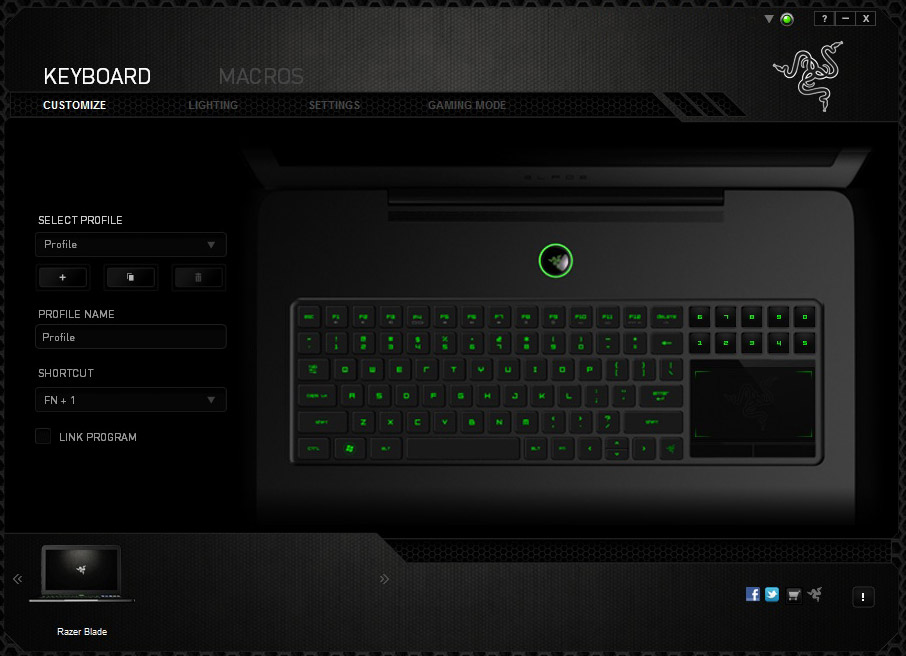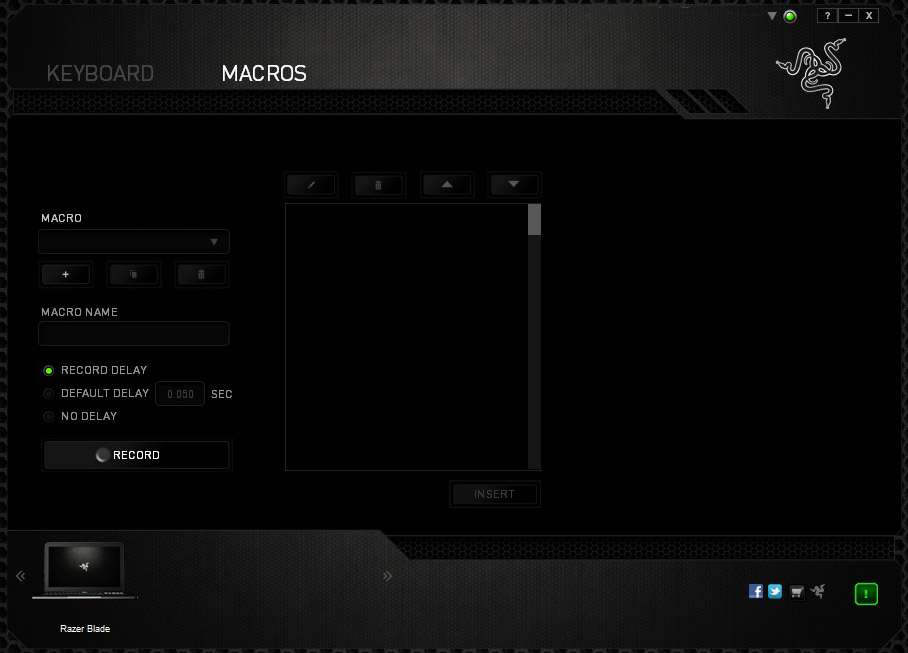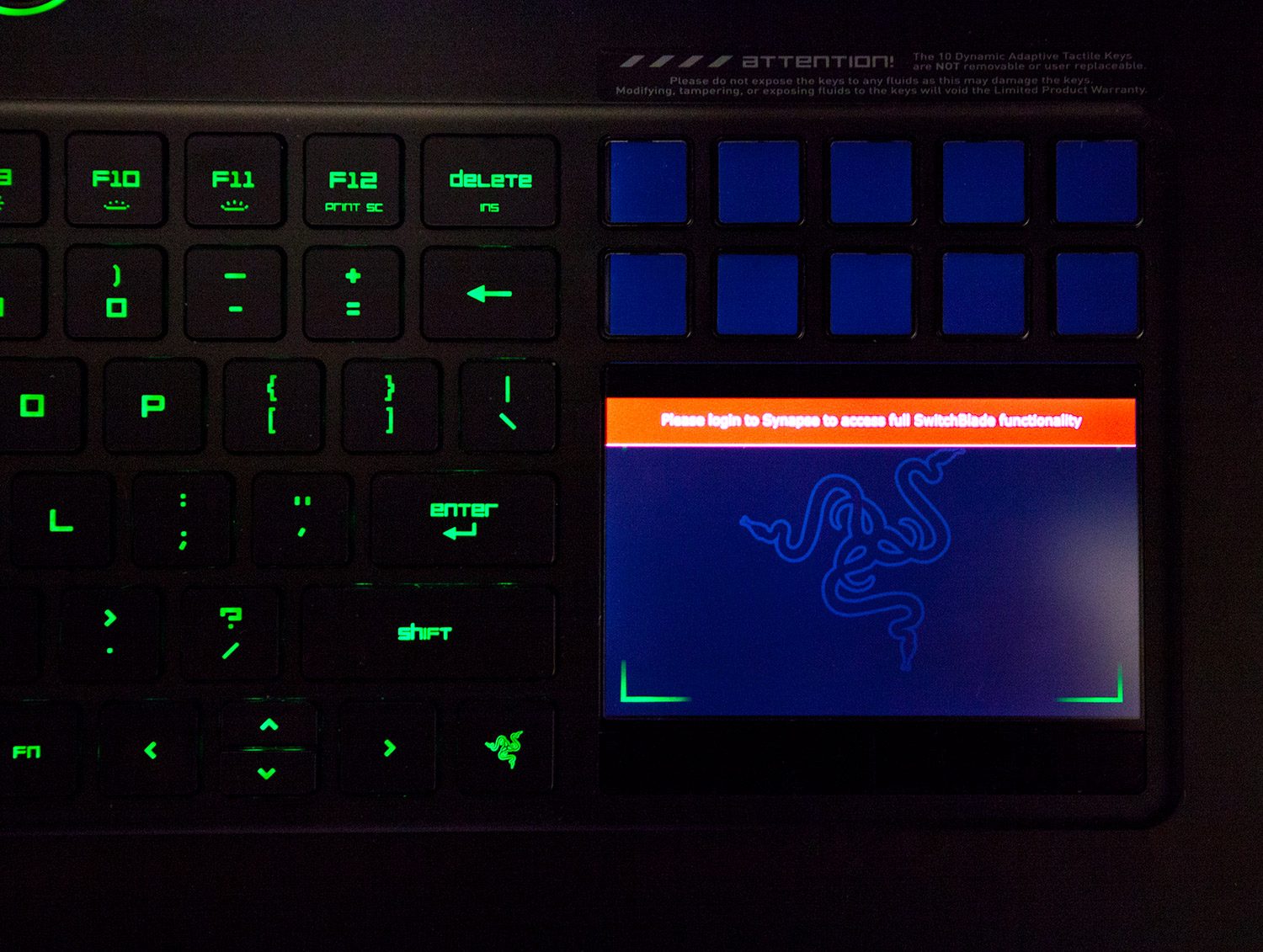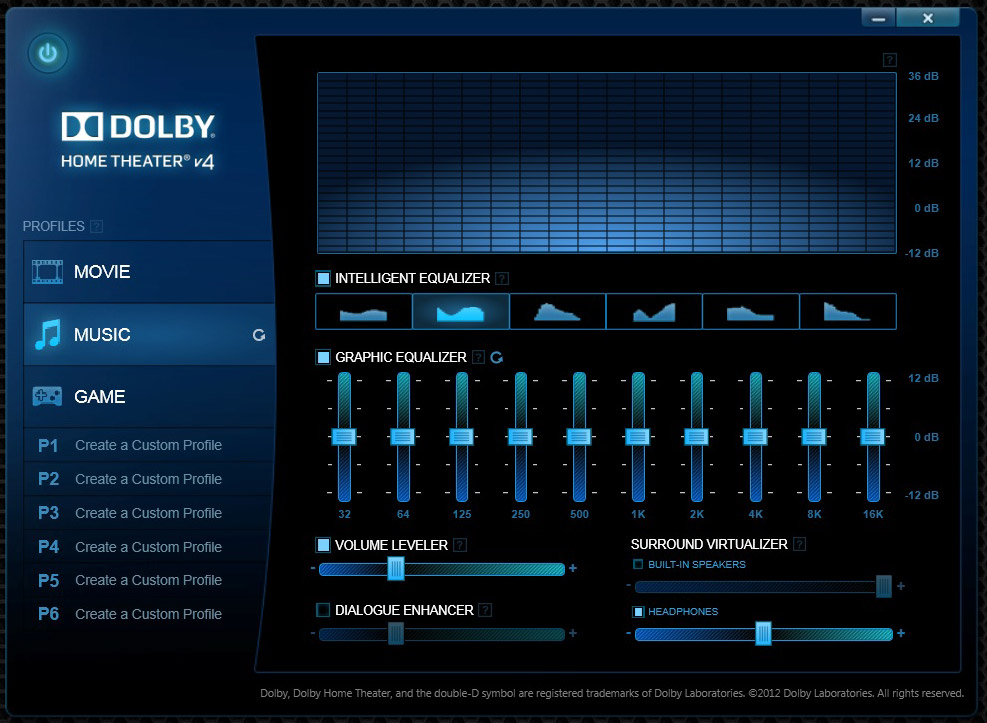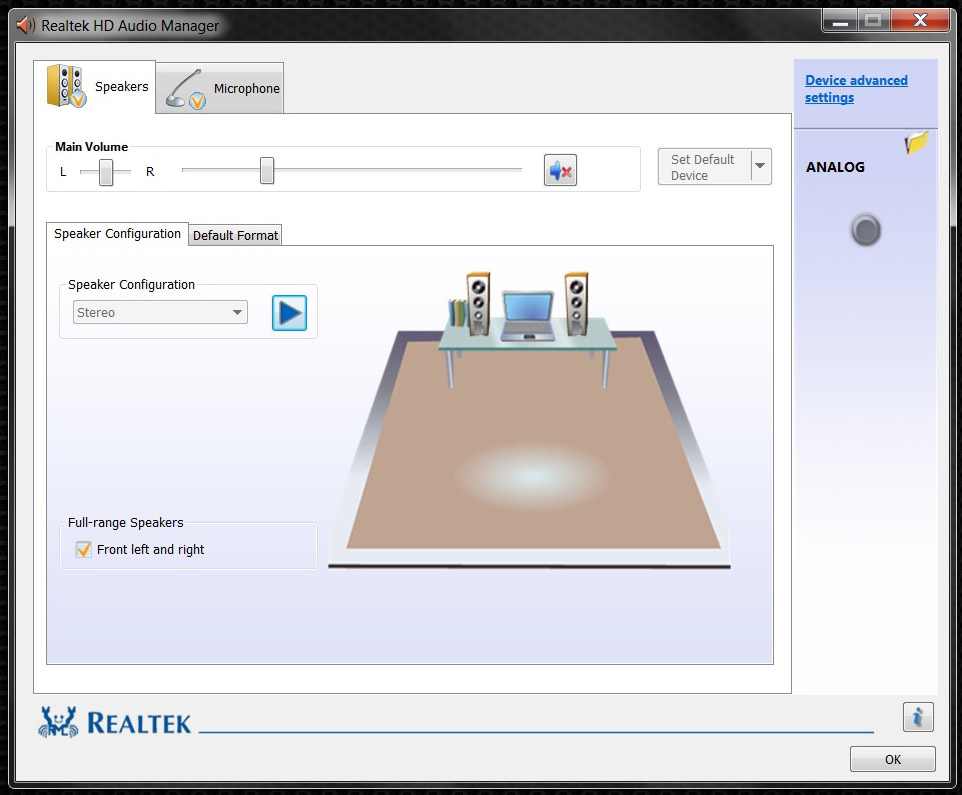Razer's Second-Generation Blade Notebook Review: Focusing On The Z
Razer recently sent us its second-gen Blade, complete with a Core i7-3632QM quad-core CPU and GeForce GTX 660M. Eight gigabytes of memory, a 500 GB hard drive, and an SSD cache round out this 17" gaming notebook. Would you believe it's less than 1" thick?
Razer Synapse And Other Included Software
Razer’s Synapse system is required for the Switchblade UI to fully function. When you first start the machine, you are greeted by an account login screen that asks for an email address and password. Until you register your email address with Razer’s online system, the Switchblade UI is nothing more than 10 dark buttons that do not work and a trackpad. Now, the touchpad still works, but much of the functionality that sets the Blade apart from other notebooks does not.
Attempting to use advanced Blade features prompts you with a message that directs you to log in and create an account for the SwitchBlade UI to work properly.
Once an account is created, the Switchblade UI comes to life. All user settings for the Switchblade UI are synced to the cloud via Razer’s Synapse, allowing settings to be moved across systems, keyboards, and other peripherals. Checking the "Stay Logged In" box permits Synapse-enabled devices to work even when a network connection is not available.
The Synapse software starts and shuts down with Windows. If there is a network connection available, the system syncs up with Razer’s cloud service and saves the Switchblade UI user settings. If there is no network connection available, settings are stored locally. This means that, if you wish, you can block Synapse from accessing the Internet and still have all the functionality that Switchblade UI provides.
The following screenshots take you through Synapse's features. Keep in mind that the software manages all Razer products on a system, so if you already have some Razer peripherals, you may see more options than those available exclusively on the Blade.
Gaming Mode lets you disable key combos that could accidentally interrupt a game.
Backlighting for the keyboard and Switchblade UI is adjusted and saved to the Synapse cloud service.
Get Tom's Hardware's best news and in-depth reviews, straight to your inbox.
Multiple keyboard customizations are available, as are multiple profiles.
The Synapse software also lets you record and edit detailed macros, which can even be used outside of games.
The trade-off to the convenience of saving settings in Razer’s Synapse cloud service is that you end up providing information about your machine to Razer. Depending on your privacy preferences, this could be considered a bad thing.
Our biggest issue with the Synapse software is that until you create an account and log into it, the Blade is essentially a crippled machine. The Switchblade UI is truly its standout feature, and without a Synapse login, you end up with just another touchpad. This bothered us enough that we spent a couple of hours with Wireshark monitoring what the software sent, and to where.
Our privacy concerns were addressed when we received more information. We spoke with Razer representatives, who assured us that the only data collected related to the hardware settings and peripherals. Our own observations with Wireshark seem to support this.
The Synapse software can also be non-personalized, and “phoning home” can be permanently disabled as well. If you log in with a throwaway email address, Razer won't have your actual email address. If the box for “Stay Logged In” is checked, and the Synapse software is blocked through the system’s firewall settings, the Blade will never call home and sync. This also blocks software updates. But then again, very private folks are used to manually downloading and installing updates anyway. In the end, Razer most likely isn’t changing its focus from gaming to harvesting user data. We honestly believe that Synapse is meant to help users get the most out of their hardware.
Other than the Switchblade UI, there is very little additional software included with the Blade. What you get is there to control the machine's hardware. Razer’s gaming-oriented focus is well supported by a lack of bloatware.
Below is a screenshot from the Dolby Home Theater software, which handles audio output for movies, music, and games. The EQ settings work well in music mode, while the dialog enhancer tunes streaming movies (played both on the machine directly and via HDMI with a couple of LCD televisions).
Further control of audio settings is provided by the Realtek HD Audio Manager.
Current page: Razer Synapse And Other Included Software
Prev Page Comparing Two Other Iconic 17" Notebooks Next Page Packaging, Included Media, System Restore-
ShadyHamster Having all the I/O on the left isn't such a bad idea, keeps the right side clear so cables don't get in the way if you use a mouse close to your laptop like i do.Reply -
mayankleoboy1 Wow, this is a very thorough review! Great work!Reply
This notebook has looked into almost every possible detail. I was particularly impressed that in the heat run, the "WASD" key area was cooler than the rest. This bespeaks extreme attention to details. -
Chairman Ray This is an amazing system. Great job by Razer! I won't be buying it due to the steep price tag, but definitely going to recommend it to those who are willing to pay for the best.Reply -
xpeh While the price is steep, this laptop is definitely one of the best looking gaming laptops I've ever seen.Reply -
g-unit1111 I very badly need to get a new laptop but this one is way too rich for my blood. I would definitely consider this if it were about $1K less.Reply -
Pyree g-unit1111I very badly need to get a new laptop but this one is way too rich for my blood. I would definitely consider this if it were about $1K less.Lenovo Y580/Y500 GT650m SLIReply -
slomo4sho xpehWhile the price is steep, this laptop is definitely one of the best looking gaming laptops I've ever seen.IMO having a $1000 gaming desktop and spending $500-600 on a laptop when Haswell comes out is probably much more economical for the occasional gaming on a laptop paired with a sold desktop to enjoy the higher quality graphics. Even at $2500, this laptop can't even keep up with the $500 budget gaming build from last month.Reply -
de5_Roy nice review. :)Reply
my real amusement came from the apu-powered laptop's performance, though. it bottlenecked the discreet gpu so badly.... :D -
corvak Gaming laptops have never been priced in a range that makes them worth buying for me. They don't really have enough battery life to really take advantage of portability, and the price/performance is in a whole other league if you compare it to any desktop build.Reply
Even buying a cheap laptop for travel use alongside a gaming desktop is likely to come in cheaper than many of these.
-
Goose_Nipples ARMY'S KA-Bar?!?!?!?! Hooooooold up my friend. Devil dog here who's jimmies have most assuredly been rustled.Reply
